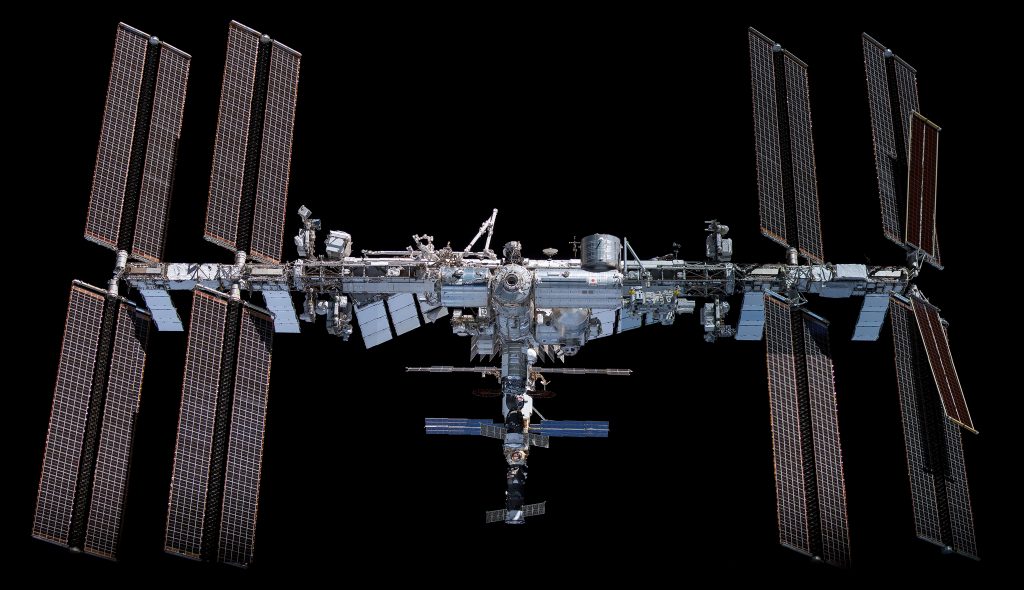The Food and Agriculture Organization of the United Nations has declared 2021-2030 as the “UN’s Decade on Ecosystem Restoration”. Clearly, the urgency to restore harmed ecosystems and fight against climate change is prevalent now more than ever. Stopping, preventing, and reversing ecosystem deterioration requires effort on a global scale, so NASA took observational tech to one of the highest viewpoints possible- the International Space Station.
Say hello to GEDI, the Global Ecosystem Dynamics Investigation system on the ISS. GEDI is pronounced like the word “Jedi”, a term made popular by the Star Wars film franchise. In fact, the official tagline for the mission is “may the forest be with you”. GEDI reveals the composition of secluded forest ecosystems all across the planet by using cutting-edge laser technology. The data gathered from GEDI allows scientists to study the structure of forests and gain a better understanding of how ecosystems are both storing or releasing carbon.
What Exactly is GEDI’s Mission?
GEDI was developed and tested by NASA’s Goddard Space Flight Center, and its mission is overseen by the University of Maryland. GEDI is on a light detection and ranging (lidar) mission, which means that it provides information about the Earth’s 3-Dimensional structure using laser pulses. These pulses provide exact measurements of surface elevation, as well as both the height and vertical structure of forest canopies. GEDI was first launched and installed on the International Space Station in December of 2018. It was scheduled to continually collect data for 2 years, but the mission time was extended in March of 2021.
Today, GEDI is currently in the final stages of its extended mission and is scheduled to be decommissioned in early 2023. However, the researchers in charge of the mission and many other scientists are pushing for even more time, citing how much valuable information GEDI still provides for the UN’s efforts to halt deforestation by the end of the decade. The longer GEDI remains in orbit, the more long-term records can be completed.

How Does GEDI Work?
GEDI uses three near-infrared lasers that are completely alike. There are four laser beams altogether, with two being utilized at full strength and the other divided into two beams. The lasers shoot 242 times every second, individually illuminating a 25-meter area of the surface to be measured.
Each beam is optically divided across-track to generate a total of 8 ground tracks, with a between-track spacing of about 1,969 feet and an overall across-track width of 2.6 mi. With an average along-track distance of 197 ft and an average footprint size of 82 ft, there is nearly constant along-track coverage.
GEDI collects lidar waveform (also known as vertical profile) measurements across 51.6° N and S latitudes. Relative Height (RH) measurements indicate the height above the ground at which a given quantile of returned energy is obtained. More succinctly, lasers shoot at the surface of the Earth and provide measurements of the planet’s 3D structure in high resolution. Each observation provides vital information on the plant canopy and the topography beneath it.
What Does GEDI Tell Us?
GEDI does so much more than provide topographical information about the Earth’s forests. Through its vertical profile measurements, GEDI is able to help answer questions about the impact of deforestation on atmospheric CO2 levels, as well as the amount of carbon forests will be able to absorb in the future. It also brings insight to how habitat loss impacts biodiversity around the world. The management of water and forest resources, the study of the carbon cycle, and weather forecasting all greatly benefit from this information. Our understanding of how these variables interact to affect the quality of habitats, diversity of animal populations, and endangerment of certain species habitat is greatly improved by the observations that GEDI provides.
Additional Information:
https://gedi.umd.edu/
https://www.decadeonrestoration.org/
https://svs.gsfc.nasa.gov/13114







